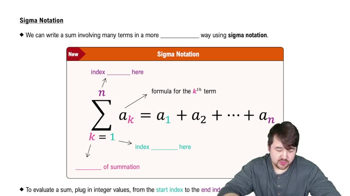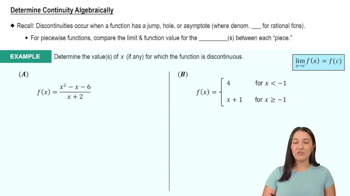Algebraic Combinations
In Exercises 1 and 2, find the domains of f, g, f + g, and f ⋅ g.
f(x) = √(x + 1), g(x) = √(x − 1)
 Verified step by step guidance
Verified step by step guidance Verified video answer for a similar problem:
Verified video answer for a similar problem:



 5:56m
5:56mMaster Adding & Subtracting Functions with a bite sized video explanation from Patrick
Start learning